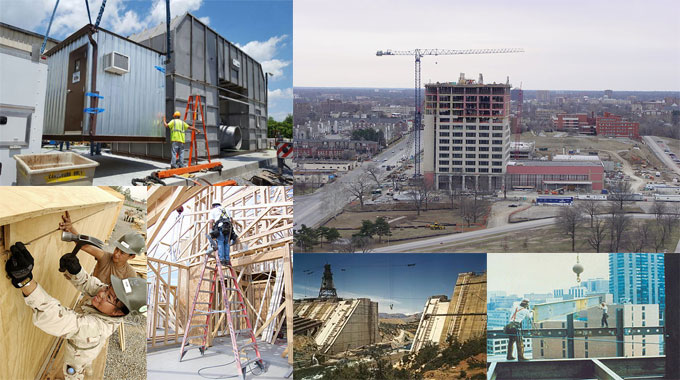NEWS | SOFTWARE | SHEET
What is construction engineering and management?
Construction is the procedure of creating a building or structure. Construction varies from manufacturing as manufacturing usually include bulk production of homogenous items without an appointed buyer, while construction usually happen on site for a declared client. Construction as a business includes 6 to 9 percent of the total domestic commodity of developed countries. Construction begins with planning, design, and funding; and keeps on until the project is done and set for use.
Forms of construction: Generally, there are three segments of construction: buildings, infrastructure and industrial. Building construction is generally further classified into residential and non-residential (institutional/commercial). Infrastructure construction is habitually called heavy highway construction, heavy civil or heavy engineering. It comprises big public works, bridges, dams, highways, water, wastewater and utility distribution. Industrial construction comprises refineries, process chemical, power generation, mills and manufacturing plants. There are additional ways to classify the construction industry into markets or sectors.
Building construction: Building construction is the procedure of giving structure to actual property or formation of buildings. The most of building construction tasks is small renovations, for example extension of a room, or makeover of a bathroom. Generally, the landlord of the property acts as laborer, paymaster, and the design team for the whole construction project. Yet building construction projects usually comprise many usual elements, such as design, financial, estimating and legal considerations, several construction projects of different sizes reach unwanted end outcomes, for instance structural collapse, cost overruns, and/or litigation. Hence, those with professionalism in the sector compose complete plans and uphold vigilant oversight during the project to make sure a constructive result.
Residential construction: The most admired technique of suburban construction in North America is wood-framed construction. Usual construction steps for single-family or small multi-family residential constructions are:
- Create floor plans and get a resources list for assessment (more freshly completed with estimating software)
- Get government building approval if needed
- Vacant the building site
- Observe to investigate the foundation
- Unearth the foundation and dig footers.
- Spill a foundation and footers with concrete
- Create the main load-bearing structure from thick pieces of wood and possibly metal I-beams for large periods with few supports. Check out framing (construction)
- Include floor and ceiling joists and set up subfloor panels
- Cover external walls and ceiling in OSB or plywood and a water-resistive barrier.
- Set up roof shingles or other covering for flat roof
- Cover up the walls with siding, typically vinyl, wood, or brick veneer but probably stone or other materials
- Put windows
- Framing
- Mount interior walls with wooden 2x4s
- Include internal plumbing, HVAC, electrical, PCB service on assembling control systems, and natural gas facilities..
- Arranging inspector visits if required to approve facilities and framing
- Setup insulation and interior drywall panels (cement board for wet areas) and to finish walls and ceilings
- Set up bathroom fixtures
- Plaster, prepare, and paint internal walls and ceilings
- Added tiling on top of cement board for wet areas, for example the bathroom and kitchen backsplash
- Set up final floor covering, such as floor tile, carpet, or wooden flooring
- Set up major appliances
- If not the original owners are building the house, at this point it is usually sold or rented.
Latest construction methods and sustainability: As productivity standards have come into action in recent years, new construction processes and techniques have appeared. University Construction Management departments are on the spearhead of the latest techniques of construction planned to get better efficiency, performance and decrease construction waste.
Modern methods of building construction are being explored, made probable by progresses in 3D printing technology. In a type of add-on building construction, like the additive manufacturing methods for manufactured parts, building printing is making it achievable to lithely construct small profit-oriented buildings and private housings in around twenty hours, with integrated plumbing and electrical features, in one nonstop build, by means of large 3D printers. Effective versions of 3D-printing building technology are by now printing 2 meters (6 feet 7 inches) of building material per hour as of January, 2013, with the next-generation printers able to print 3.5 meters (11 feet) per hour, enough to create a building in a week. Dutch architect Janjaap Ruijssenaars's inspiring architecture 3D-printed building was planned to be built in 2014.

Image Courtesy & Source: en.wikipedia.org

